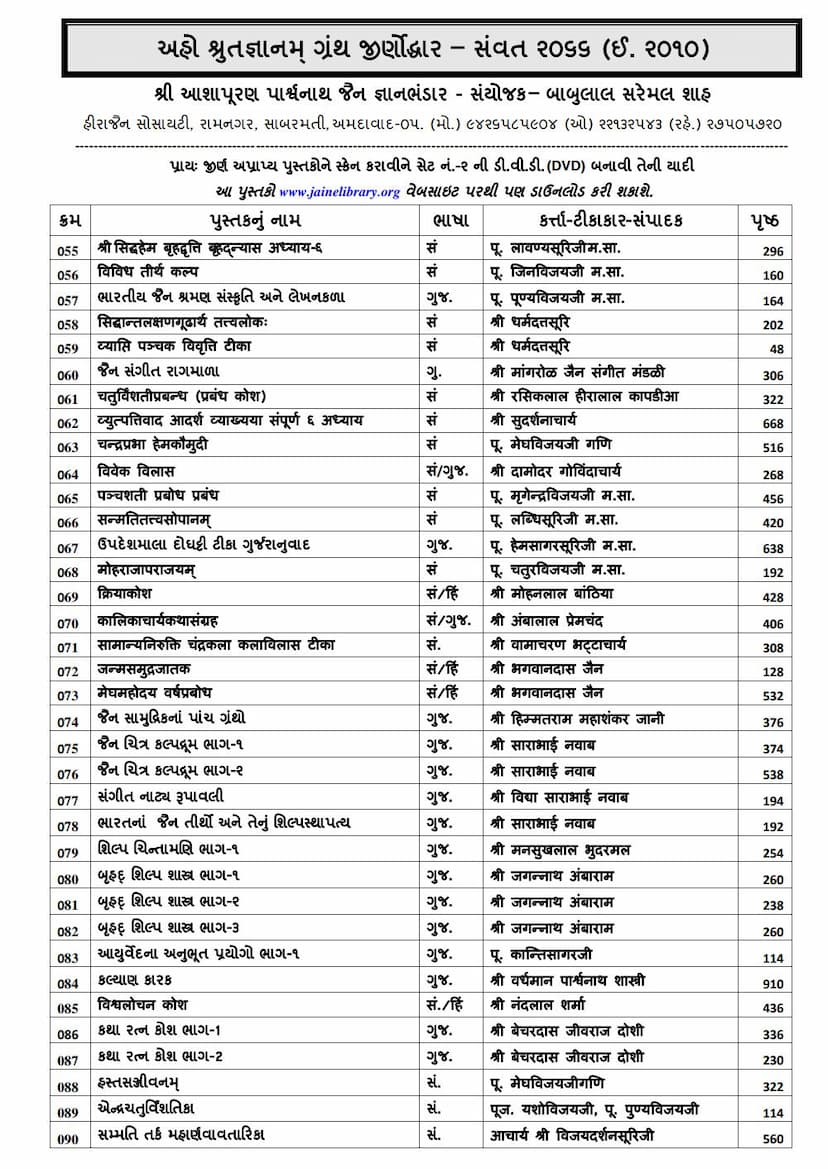Meghmahodaya Harshprabodha
Added to library: September 2, 2025

Summary
Certainly! Here's a comprehensive summary of the Jain text "Meghamahodaya Harshprabodha" by Bhagwandas Jain, based on the provided catalog link and the Gujarati text:
Book Title: Meghamahodaya Harshprabodha Author: Bhagwandas Jain Publisher: Bhagwandas Jain Catalog Link: https://jainqq.org/explore/009532/1
Overall Summary:
"Meghamahodaya Harshprabodha" is a significant work in Jain literature, particularly within the field of astrology and meteorology, as presented by Bhagwandas Jain. The text is an elaboration and commentary, likely in Gujarati and possibly Hindi, on the original Sanskrit work by Mahamahopadhyay Shri Meghvijayganiji. The core purpose of the book is to provide insights into predicting weather patterns, rainfall, and the general auspiciousness or inauspiciousness of a year based on astronomical observations and traditional Jain knowledge.
The provided pages indicate a detailed exploration of various astrological factors influencing the year's climate and events. The work is structured into several chapters or sections, each delving into specific aspects of prediction.
Key Content and Themes:
-
Shrutgyanam Granth Jireddhar: The book's context is presented as part of a project to restore and preserve old manuscripts. This highlights the importance of preserving traditional knowledge for future generations. The publication is credited to Shri Ashapooran Parshwanath Jain Gyan Bhandar in Ahmedabad, India, indicating a connection to Jain scholarly institutions.
-
Astrology and Meteorology: A substantial portion of the text is dedicated to astrological principles applied to predict weather. This includes:
- Yearly Predictions (Varshaphal): The central theme revolves around understanding the characteristics of the upcoming year, such as rainfall, droughts, prosperity, and potential calamities.
- Planetary Influences: The text likely details the impact of planetary positions (graha), their transits through zodiac signs (rashi), and their specific influences on weather and societal well-being. The mention of specific planetary transits like Jupiter (Guru) and Saturn (Shani) in different houses is evident.
- Naked Eye Observations (Shakun): The book extensively covers omens and signs observed in nature, such as the behavior of animals (crows, peacocks), celestial phenomena (rainbows, atmospheric changes), and the appearance of clouds, wind patterns, and even unusual events related to nature. These are interpreted as indicators of future outcomes.
- Cyclical Predictions: The text appears to discuss cyclical patterns based on planetary movements, possibly incorporating concepts like the sixty-year cycle of Samvatsaras and their associated influences.
-
Influence of Natural Phenomena:
- Clouds and Wind: Detailed analysis of cloud formations, their colors, shapes, directions of movement, and various wind types is present, as these are considered primary indicators of rainfall.
- Rainfall Patterns: Specific predictions about the timing, quantity, and nature of rainfall are a core element. This includes understanding auspicious and inauspicious rains.
- Earthquakes and Other Calamities: The text may also touch upon predicting natural disasters like earthquakes, fires, and their connection to astrological configurations.
-
Jain Asceticism and Knowledge: The work is rooted in Jain philosophy, with mentions of the teachings of prominent Jain acharyas like Mahamahopadhyay Shri Meghvijaygni, who was a successor in the lineage of Shri Hirvijaysurishwarji. The author, Bhagwandas Jain, also appears to have dedicated considerable effort to researching and presenting this knowledge accurately.
-
Specific Predictive Tools/Concepts:
- Chakras (Diagrams): The text refers to various astrological diagrams like "Padmini Chakra" (also called Kurma Chakra), "Sarvatobhadra Chakra," and "Karpur Chakra." These are likely geometrical diagrams used for specific planetary readings and predictions.
- Mantras and Rituals: There are hints of specific mantras and practices mentioned, possibly for invoking favorable weather or mitigating adverse effects, although the summary focuses on the predictive aspect.
-
Commentary and Restoration: The title "Harshprabodha" suggests a commentary or illumination, and the context of "granth jireddhar" (manuscript restoration) implies that Bhagwandas Jain's contribution is to make this ancient knowledge accessible and understandable, possibly with a modern commentary or translation.
-
Structure and Content Details: The "Vishayanukramanika" (Table of Contents) provided lists thirteen "Adhikaras" (chapters or sections), covering topics such as:
- The nature of wind (Vatayadhikara)
- Various celestial phenomena (Utpat Prakaran)
- The influence of planets in different zodiac signs (Grahachar)
- The importance of the year's ruler and ministers (Varsharaj Adhikara)
- Detailed analysis of months and their influence (Mas Vichaar)
- The role of celestial bodies and their movements (Surya Vichaar, Chandra Vichaar, Mangal Vichaar, Budh Vichaar, Guru Vichaar, Shukra Vichaar, Shani Vichaar, Rahu Vichaar, Ketu Vichaar)
- The concept of "Adhimas" (intercalary month) and its impact.
- The significance of Tithis (lunar days) and Nakshatras (lunar mansions).
- The meticulous detail about interpreting various signs (Shakun) for predictions.
In essence, "Meghamahodaya Harshprabodha" is a compendium of Jain astrological knowledge focused on weather forecasting, providing a systematic framework to understand and predict natural phenomena and their impact on human life and society. It serves as a guide for those seeking to comprehend the subtle influences of celestial bodies and natural signs.